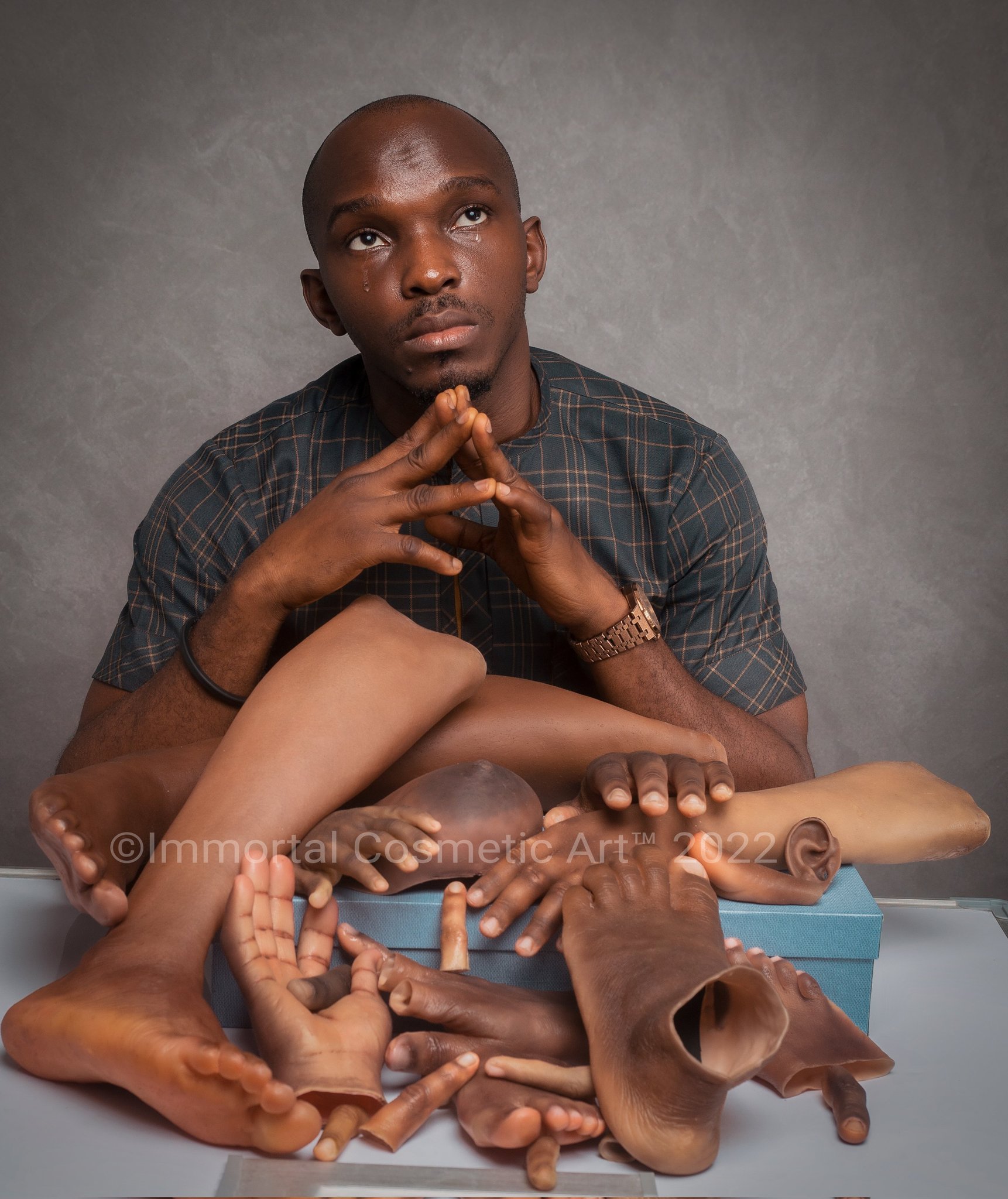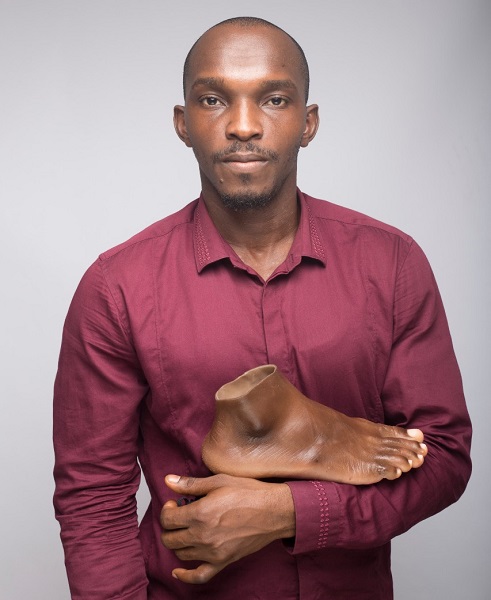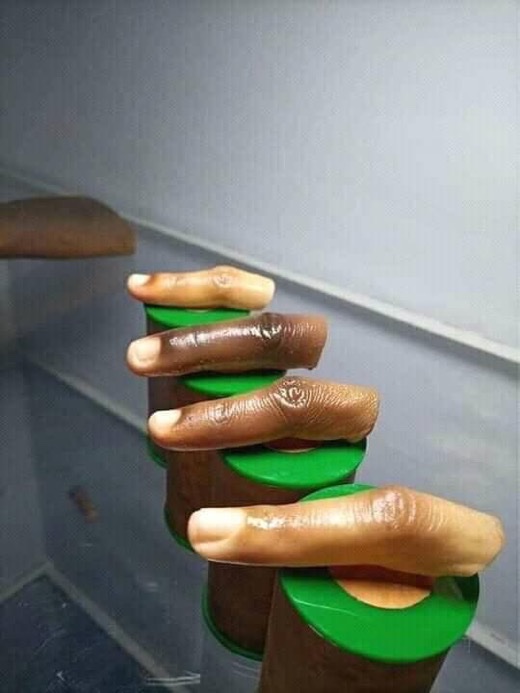Living with amputations is challenging. It’s hard enough to need to re-learn locomotion and other natural habits. Amputees also struggle with acceptance and inclusion in society. Prostheses tackle both problems, making them one of the most potent coping systems for amputees today. However, the prosthesis market largely excludes Africans. The World Health organization estimates 30 million people in emerging economies live with amputated limbs, and only five per cent of them have access to prosthetics. But even worse, dark skin tones are largely ignored in global production. White people are often the focus of the prosthesis market. Consequently, Africans have been using prosthetics that do not match their skin colour. John Amanam, the founder of Immortal Cosmetic Art, is plugging this gap by creating hyper-realistic prostheses for darker skin tones.
John Amanam is a Nigerian sculptor and prosthetic artist from Uyo, Akwa-Ibom state. Before founding Immortal Cosmetic Art, he used to be a movie special effects artist. Amanam’s innovation — which spans prosthetic hands, legs, fingers, toes, ears, noses, and breasts — was so rare that he registered a patent over his innovation in Nigeria last year. However, his work, which has thrilled many Africans, comes with a backstory.
READ ALSO : Genevieve Nnaji allegedly hospitalized for mental health issues
Amanam is not your everyday artist. Art transcends craft, and even passion, for him — it’s a part of his bloodline. According to him, he was born an artist. “Art is hereditary for me”, Amanam said in an interview with Ventures Africa. “My grandparents were artists, and so was my father. I come from a family of artists, so it runs through our blood.” But that wasn’t enough for John. He wanted to study arts to become a professional. Ironically, his art savvy parents did not consent. “My parents did not want me to study arts because they did not believe the profession was lucrative at the time,” he said. “That led me to study philosophy, but I only did it for two years before switching to arts.”
Amanam is not wrong. Africa still has a large rural population. In Nigeria, Amanam’s home country, nearly half (48 per cent) of the population live in rural communities. Meanwhile, Amanam’s production team currently consists of only seven handcrafters. Starting this kind of venture also needs a lot of capital, which Amanam asserted. “Initially, we needed investors. But then we realized that was not the priority at that time. We had to do our homework, which included getting patents and trademarks. I think, at this point, we are now better placed to receive investments.”
READ ALSO : Health zone : importance of healthy blood vessels
Being the single solution to a Pan African problem is great. But it is also a tremendous responsibility. “We have clients from almost 50 countries. We have challenges having them visit us amid Covid restrictions and security challenges,” Amanam said. Nevertheless, he is relentless. His drive to meet people’s prosthetic needs is louder than his calm, baritone voice. “We’ve encountered challenges, but none of them can stop us. Instead, we’ve learnt a lot and have gained a lot of exposure,” he said. Amanam is looking to open branches in as many African countries as possible. “We will create branches and have representatives in other countries. So people can reach out to us through these agents, and we don’t have to keep them waiting.”

Amanam also does not rule out competition. He welcomes it. “There will definitely be competition at some point, and that’s fine. There’s always room for improvement. But they have to get approval from me first. I own the patents and trademarks.”
Written by Oluwatosin Ogunjuyigbe
More images..



-venturesafrica.com